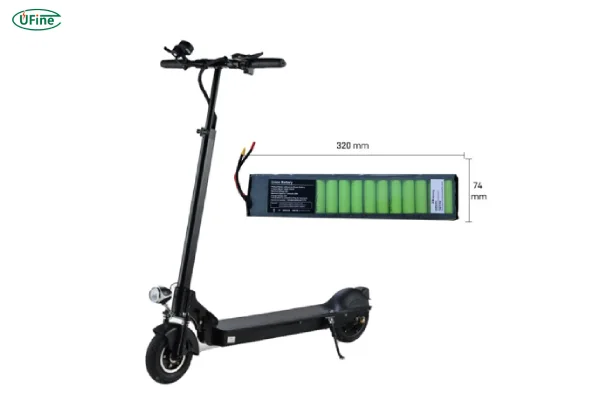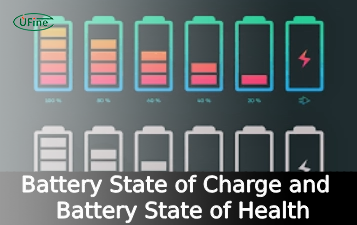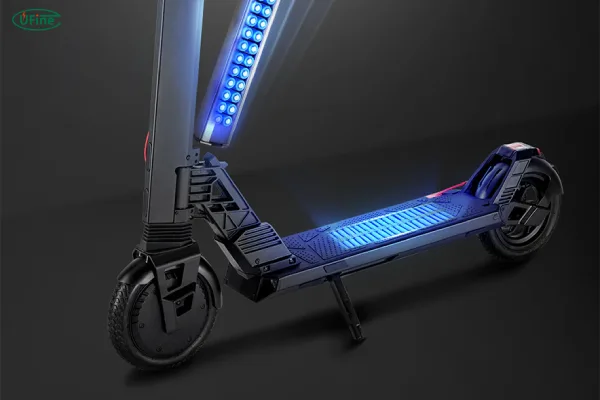
- Part 1. How does a scooter battery affect performance?
- Part 2. Scooter battery voltage
- Part 3. Scooter battery price
- Part 4. What battery type is best for your scooter?
- Part 5. How many amps is a scooter battery? Is bigger always better?
- Part 6. Common scooter battery lifespan
- Part 7. What affects scooter battery life?
- Part 8. Signs your scooter battery needs replacing
- Part 9. How to replace a scooter battery?
- Part 10. How to charge a scooter battery safely?
- Part 11. 7 Key points to choose a high-quality scooter battery
- Part 12. Final thoughts
- Part 13. FAQs
Part 1. How does a scooter battery affect performance?
When you press the throttle, your scooter shouldn’t jerk or stall. It should glide. That smoothness? All thanks to battery strength. A plugin with weak current can lead to:
- Slow acceleration
- Limited top speed
- Uneven power delivery on hills
- Early voltage drop, even mid-ride
In short, a healthy battery isn’t just a part—it’s the soul of your scooter’s performance.
Part 2. Scooter battery voltage
Voltage is like fitness level—you want enough to power the ride without overdoing it. Scooter voltage typically runs:
- 24V–36V: Ideal for light, urban rides
- 48V–60V+: Built for tougher demands, faster speeds
Choosing a higher voltage can give you more pep—but only if your motor and controller can handle it. Otherwise, you risk burning components or harming yourself.
Part 3. Scooter battery price
Yes, batteries cost money. But choosing the right one is about value—not just price:
- Lead-Acid (SLA): $40–60
- Budget-friendly, but heavy and short-lived
- Lithium-ion (Li-ion): $120–300
- Light, quick, and long-lasting
- LiFePO₄: $200–400
- Extra safe, ultra-durable—but heavier
What if price could equal enjoyment? Spending more upfront often means fewer replacements and better rides.
Part 4. What battery type is best for your scooter?

Let’s look deeper:
Lead-Acid (SLA) battey
Pros: Affordable, recyclable.
Cons: Weighs down the scooter, drains quick, 300–400 cycle lifespan.
Lithium-Ion battery
Pros: Light, efficient, 500–1,000 cycles.
Cons: Needs smart charge control and careful handling.
LiFePO₄ battery
Pros: 1,000+ cycles, chemically stable, safety-first.
Cons: Costs more and weighs more than Li-ion.
For most, Li-ion hits the balance of cost, weight, and performance. LiFePO₄ suits those seeking maximum safety and longevity—especially if daily commute or harsh conditions are part of your routine.
Part 5. How many amps is a scooter battery? Is bigger always better?
Scooter batteries are rated in Amp-hours (Ah). More Ah means longer range, similar to having a bigger gas tank. But bigger doesn’t always mean better:
- More capacity = more weight
- Oversize could strain your scooter frame or suspension
Instead, think of Ah capacity as fuel for your expected journeys. Need urban commuting? A mid-range Li-ion (10–15 Ah) works well. Several miles daily? Step up, but don’t overdo it.
Part 6. Common scooter battery lifespan
Scooter batteries have a story:
- SLA: ~300–400 cycles (~1–1.5 years)
- Li-ion: ~500–1,000 cycles (~2–3 years)
- LiFePO₄: ~1,000–2,000 cycles (~4–5 years+)
These aren’t just technical terms—they’re ride credentials. Don’t let early battery failure cut your adventure short.
Part 7. What affects scooter battery life?
Here’s what subtly strips a battery of its lifeblood:
- Deep Discharges – Riding until dead depletes cell capacity fast.
- High Heat or Cold – Affects battery chemistry more than any ride.
- Poor Charging Habits – Overcharging or wrong voltage damages cells.
- Rough Roads and Knocky Paths – Physical stress matters to pack health.
- Mismatched Chargers – Using cheap or incompatible plugs kills lifespan.
- Moisture and Corrosion – Especially around outdoor rides and rain.
Seeing these conditions again makes you realize how important care is—and why we recommend Ufine Battery, crafted to handle exactly these challenges with proper chemistry and design.
Part 8. Signs your scooter battery needs replacing
Your scooter shouldn’t feel lifeless. If it:
- Drags hills, even after a charge
- Cuts off early or charges longer than normal
- Swells near the battery compartment
- Shows “low voltage” alerts frequently
- Emits heat during use or charging
…then it’s speaking to you. Listen. A failing battery could lead to breakdowns—or worse.
Part 9. How to replace a scooter battery?
Replacing a pack isn’t just about pulling one out and plugging another in:
- Power off and remove the seat or deck plate.
- Unplug connectors carefully—note polarity.
- Remove old battery and unpack your replacement.
- Confirm dimensions fit snugly.
- Connect and secure your new battery.
- Charge fully before the first ride.
- Test ride and monitor performance.
If you’re upgrading—like from SLA to Li-ion—double-check voltage compatibility and invest in a smart charger. If in doubt, reach out to experts.
Part 10. How to charge a scooter battery safely?
Safe charging routine means longer life:
- Stick to the original or high-quality charger
- Charge in dry, ventilated places (avoid bathrooms, garages)
- Unplug at full charge—never leave it plugged in overnight
- Charge when the battery is cool or room temperature
- Try to keep charge levels between 20–80% for Li-ion longevity
These little steps result in big dividends for battery lifespan.
Part 11. 7 Key points to choose a high-quality scooter battery
Your next purchase should check all boxes:
- Right Voltage (24/36/48/60 V)
- Capacity Aligned with Need (Ah guides range)
- Chemistry Choice (Li-ion or LiFePO₄ recommended)
- Built-in BMS for safety
- Proper Size & Weight for your scooter
- Certifications: CE, UL, RoHS
- Reliable Supplier – Trusted brands offer support & real quality
For example, Ufine Battery is a Chinese custom lithium specialist. Our offer:
- Lithium polymer, LiFePO₄, 18650, cylindrical options
- Ultra-thin, high-rate, and high-temp battery packs
- Custom sizes, voltages, and capacities to match your scooter exactly
Part 12. Final thoughts
A scooter battery is more than a power source—it’s the pulse of the ride. Making informed decisions on battery type, replacement timing, charging habits, and quality supplier ensures smoother rides, longer service, and fewer surprises.
If you’re ready to upgrade, customize, or simply want peace of mind, Ufine Battery offers tailor-made lithium solutions that match your scooter in power, size, and endurance.
Contact us today, let’s power your mobility future together.
Part 13. FAQs
Can I charge my scooter battery with a solar panel?
Yes—but you’ll need a solar charger matching your battery voltage and current needs.
How much does a scooter battery weigh?
SLA batteries weigh 5–10 kg; Li-ion options weigh 2–4 kg. LiFePO₄ is a middle ground.
Can extreme heat ruin my battery?
Absolutely—hot days reduce lifespan. Store in shade and avoid charging after a hot ride.
Is it safe to ride with a swollen battery?
No. That’s a sign of gas buildup—stop and replace it immediately.
What should I do with an old scooter battery?
Bring it to a certified e-waste or battery recycling center. Never toss it in regular trash.
Related Tags:
More Articles

Battery State of Charge and Battery State of Health
Battery SoC vs. SoH explained: Learn professional methods to measure charge levels, test health status, and optimize battery performance for longer lifespan.
Difference Between 18650, 26650, and 21700 Batteries
What’s the difference between 18650, 21700, and 26650 batteries? Compare size, capacity, and performance to find the best lithium battery for your device.
LFP Battery Vs. LTO Battery: A Detailed Comparison
Compare LFP (LiFePO4) and LTO (Lithium Titanate) batteries by energy density, lifespan, safety, cost, and uses in EVs, solar storage, and backup power.
Compare 18650 battery types: Li-ion, LiFePO4, and LiPo. Key specs (voltage/capacity) and best uses for vapes, flashlights, EV batteries.
How to Distinguish Between Grade A, Grade B, and Grade C LiFePO4 cells?
Explore the differences between Grade A, B, and C LiFePO4 cells and learn how to choose the right one for electric vehicles, solar storage, or backup power.



